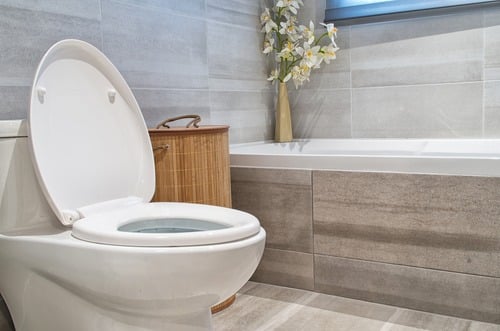Are Low-Flow Toilets Worth It?

Thinking of installing a low flow toilet? Whether you're looking to save money on water costs or to be kinder to the environment, find out the pros and cons.


Thinking of installing a low flow toilet? Whether you're looking to save money on water costs or to be kinder to the environment, find out the pros and cons.
Low-flow, or low-flush toilets are popular with many homeowners who like to conserve water, whether to save money or to limit their home's impact on the environment. These efficient, water-saving toilets have come a long way since they were first introduced in the 1990s, with many styles available today offering better functionality and more options than in previous years.
While low-flow toilets are often more expensive to install and maintain than traditional toilet fixtures, they can also save you a significant amount of money over time.
If you are thinking about adding one or more low-flow toilets to your home, you may have some of the following questions as well.
How Do Low Flush Toilets Work?
Low-flush toilets use one of two methods to clear waste: gravity or pressure-assistance.
Gravity-driven toilets clear waste when the flapper in the toilet tank moves and water is released. Water flows down from the tank into the bowl, flushing its contents, while gravity carries the waste down into and through the pipes.
Pressure-assisted toilets have a pressure tank that works like a big water balloon. Water fills the toilet tank and is held there under pressure. When the flush valve opens, pressure and gravity combine for a powerful flush.
How Much Water Does a Low-flow Toilet Use?
Toilets are the biggest water drain in American households, according to the Environmental Protection Agency (EPA), accounting for almost 30 percent of water use in the home. Older toilets can use anywhere from 3.5 to 7 gallons of water with every flush. Consequently, many cities and counties have begun passing conservation laws requiring homeowners and landlords to install low-flow toilets.
Government plumbing standards for low-flow toilets specify that they use no more than 1.6 gallons per flush. There are also high-efficiency models that use 1.28 gallons per flush or less.
What Are Some Low-flow Toilet Problems?
Common complaints about these toilets include noise, flushing, or water pressure issues.
Thinking about coverage?
Security for your home. Protection for your budget.
Low-flow Toiles Vs. Regular Toilets: What's Right for My Home?
Whether you are required to install low-flow toilets due to local ordinances or are simply interested in saving water and money, here are some things to consider when choosing the right option for your home.
The Pros
The Cons
If you're interested in keeping your appliances protected, an American Home Shield® home warranty may be a good option for you. Our professional home service contractors can help with repair and replacements of covered items, including plumbing.
See how a plumbing protection plan can help with covered repairs.

AHS assumes no responsibility, and specifically disclaims all liability, for your use of any and all information contained herein.
Have a plan for your home when things don't go according to plan
Shop Home Warranties